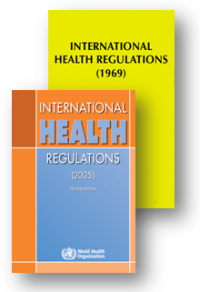 What has changed?The IHR were first adopted by the World Health Assembly in 1969 and covered six diseases. The Regulations were amended in 1973, and then in 1981, to focus on three diseases: cholera, yellow fever and plague. With the increase in international travel and trade, and the emergence, re-emergence and international spread of disease and other threats, the World Health Assembly called for a substantial revision in 1995.
What has changed?The IHR were first adopted by the World Health Assembly in 1969 and covered six diseases. The Regulations were amended in 1973, and then in 1981, to focus on three diseases: cholera, yellow fever and plague. With the increase in international travel and trade, and the emergence, re-emergence and international spread of disease and other threats, the World Health Assembly called for a substantial revision in 1995.
The revision extended the scope of diseases and related health events covered by the IHR to take into account almost all public health risks (biological, chemical, radiological or nuclear in origin) that might affect human health, irrespective of the source.
The revised Regulations (2005) were adopted at the Fifty-eighth World Health Assembly on 23 May 2005 and entered into force on 15 June 2007. They require States Parties to notify a potentially wide range of events to the WHO. Key implementation milestones for States Parties include:
the assessment of their surveillance and response capacities;
the development and implementation of plans of action to ensure that these core capacities are functioning by 2012.
IHR briefs
IHRbrief no.1: Introduction to the IHR (2005) [pdf 25kb]
IHRbrief no.2: Notification and reporting requirements under IHR (2005) [pdf 42kb]
IHRbrief no.3: Points of entry under the IHR (2005) [pdf 39kb]








